Daniel S. Jeon
Polarimetric iToF: Measuring High-Fidelity Depth through Scattering Media
Jun 30, 2023



Abstract:Indirect time-of-flight (iToF) imaging allows us to capture dense depth information at a low cost. However, iToF imaging often suffers from multipath interference (MPI) artifacts in the presence of scattering media, resulting in severe depth-accuracy degradation. For instance, iToF cameras cannot measure depth accurately through fog because ToF active illumination scatters back to the sensor before reaching the farther target surface. In this work, we propose a polarimetric iToF imaging method that can capture depth information robustly through scattering media. Our observations on the principle of indirect ToF imaging and polarization of light allow us to formulate a novel computational model of scattering-aware polarimetric phase measurements that enables us to correct MPI errors. We first devise a scattering-aware polarimetric iToF model that can estimate the phase of unpolarized backscattered light. We then combine the optical filtering of polarization and our computational modeling of unpolarized backscattered light via scattering analysis of phase and amplitude. This allows us to tackle the MPI problem by estimating the scattering energy through the participating media. We validate our method on an experimental setup using a customized off-the-shelf iToF camera. Our method outperforms baseline methods by a significant margin by means of our scattering model and polarimetric phase measurements.
Sparse Ellipsometry: Portable Acquisition of Polarimetric SVBRDF and Shape with Unstructured Flash Photography
Jul 09, 2022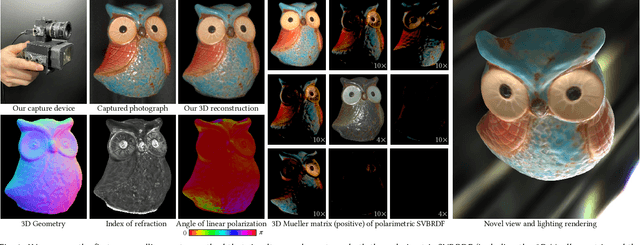
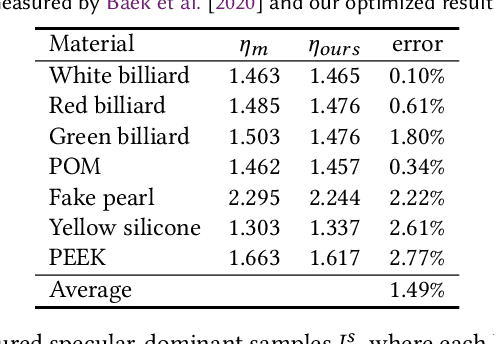
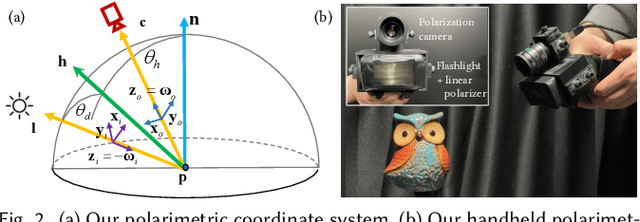
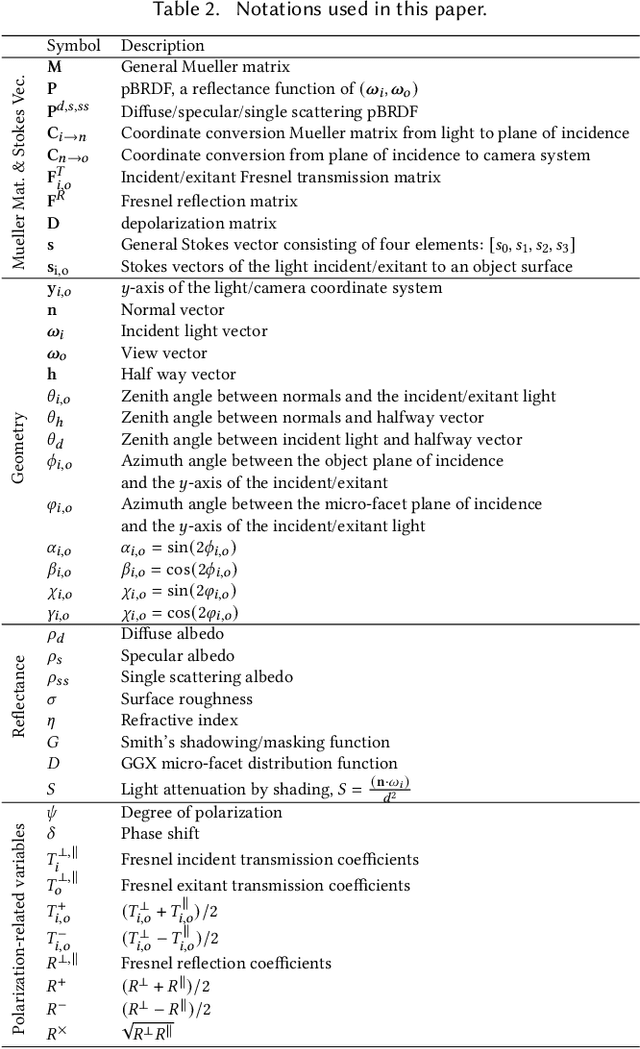
Abstract:Ellipsometry techniques allow to measure polarization information of materials, requiring precise rotations of optical components with different configurations of lights and sensors. This results in cumbersome capture devices, carefully calibrated in lab conditions, and in very long acquisition times, usually in the order of a few days per object. Recent techniques allow to capture polarimetric spatially-varying reflectance information, but limited to a single view, or to cover all view directions, but limited to spherical objects made of a single homogeneous material. We present sparse ellipsometry, a portable polarimetric acquisition method that captures both polarimetric SVBRDF and 3D shape simultaneously. Our handheld device consists of off-the-shelf, fixed optical components. Instead of days, the total acquisition time varies between twenty and thirty minutes per object. We develop a complete polarimetric SVBRDF model that includes diffuse and specular components, as well as single scattering, and devise a novel polarimetric inverse rendering algorithm with data augmentation of specular reflection samples via generative modeling. Our results show a strong agreement with a recent ground-truth dataset of captured polarimetric BRDFs of real-world objects.
End-to-End Hyperspectral-Depth Imaging with Learned Diffractive Optics
Sep 01, 2020
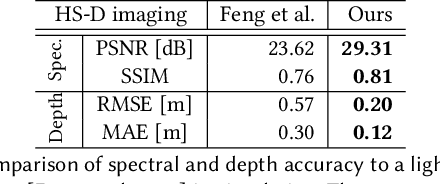


Abstract:To extend the capabilities of spectral imaging, hyperspectral and depth imaging have been combined to capture the higher-dimensional visual information. However, the form factor of the combined imaging systems increases, limiting the applicability of this new technology. In this work, we propose a monocular imaging system for simultaneously capturing hyperspectral-depth (HS-D) scene information with an optimized diffractive optical element (DOE). In the training phase, this DOE is optimized jointly with a convolutional neural network to estimate HS-D data from a snapshot input. To study natural image statistics of this high-dimensional visual data and to enable such a machine learning-based DOE training procedure, we record two HS-D datasets. One is used for end-to-end optimization in deep optical HS-D imaging, and the other is used for enhancing reconstruction performance with a real-DOE prototype. The optimized DOE is fabricated with a grayscale lithography process and inserted into a portable HS-D camera prototype, which is shown to robustly capture HS-D information. In extensive evaluations, we demonstrate that our deep optical imaging system achieves state-of-the-art results for HS-D imaging and that the optimized DOE outperforms alternative optical designs.
 Add to Chrome
Add to Chrome Add to Firefox
Add to Firefox Add to Edge
Add to Edge